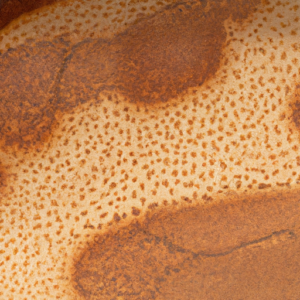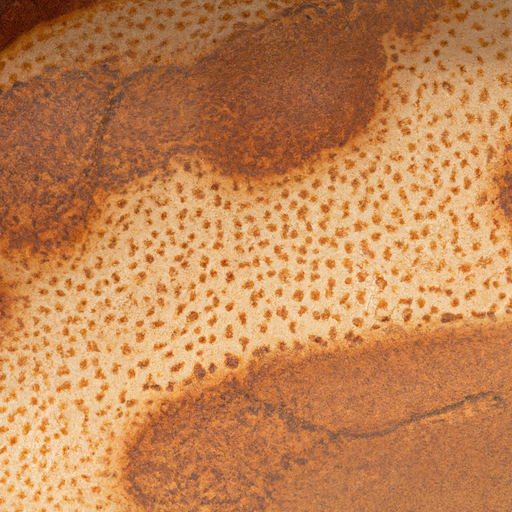My Journey with Hyperpigmentation: Understanding the Causes and Treatment Options
Hey there, fellow skincare enthusiasts! My name is [insert name], and I’ve been struggling with hyperpigmentation for years. For those who are new to the term, hyperpigmentation is a common skin condition that affects people of all skin types and colors. It’s characterized by dark patches or spots on the skin caused by excess melanin production. In this blog post, I want to share my journey with hyperpigmentation, including some of the causes and treatment options that have worked for me.
When it comes to hyperpigmentation, there are various causes to consider. Sun exposure is one of the most common culprits, which is often the result of insufficient sun protection. UV rays can damage skin cells and cause dark spots to form over time. To prevent and treat sun-induced hyperpigmentation, it’s essential to wear sunscreen with at least SPF 30 daily and limit sun exposure during peak hours.
Another factor that can contribute to hyperpigmentation is hormonal imbalance. Hormones can have a significant impact on the skin’s pigmentation, especially during pregnancy or menopause. In such cases, consulting a healthcare professional is recommended to address the underlying hormonal issues and reduce hyperpigmentation symptoms.
Post-inflammatory hyperpigmentation is yet another type of hyperpigmentation that often results from skin injuries, such as acne, cuts, or burns. It’s characterized by dark spots that appear after the skin has healed. The good news is that it’s treatable with effective skincare products, such as vitamin C serums and chemical exfoliants.

Medication side effects can also lead to hyperpigmentation. Certain drugs, such as antibiotics, chemotherapy, and antimalarials, can cause skin discoloration as a side effect. If you suspect that your medication may be causing your hyperpigmentation, consult your doctor to explore alternative options or potential solutions to manage the condition.
Finally, genetics plays a role in hyperpigmentation. Some people are naturally predisposed to excessive melanin production, making them more susceptible to dark spots or patches. While treatment options for genetic hyperpigmentation may be limited, investing in a consistent skincare routine with ingredients like niacinamide or kojic acid can help to fade dark spots over time.
Overall, hyperpigmentation can be a frustrating skin condition to deal with. But with the right knowledge, tools, and treatment options, it’s possible to minimize the symptoms and achieve a brighter, more even complexion. If you’re struggling with hyperpigmentation, know that you’re not alone, and there are ways to manage it effectively!
Sizzling Sun: UV rays, effects & protectionHey folks! Let’s dive into the most common cause of hyperpigmentation: Sun Exposure. The sun has a profound impact on our skin, causing a range of skin problems, including sunburns, wrinkles, and hyperpigmentation. Prolonged exposure to the sun’s UV rays stimulates melanin production, which causes hyperpigmentation. But don’t worry, we’ve got you covered (literally!). UV Rays: Sneaky Skin DamagersThe UV rays from the sun are sneaky! They damage the layers of our skin by activating melanocytes, causing the production of extra melanin. The result? Uneven skin tone, dark spots, and a splotchy complexion. Hyperpigmentation from the sun often appears on the face, neck, and hands. UV rays can be harmful even on cloudy days. The only way to protect yourself from the harmful effects of the sun is to use sunscreen religiously.Prevention Is KeyWearing sunscreen year-round is the best way to prevent hyperpigmentation caused by the sun. Opt for a broad-spectrum sunscreen that protects against UVA and UVB rays with at least SPF 30. For those with oily skin, go for a lightweight, oil-free formula. Additionally, protect your skin by wearing wide-brimmed hats, sunglasses, and long sleeves. Avoiding the sun during peak hours, using shade as much as possible, and seeking refuge indoors during extreme heat will also reduce sun exposure.Treatment OptionsSo you got carried away tanning under the sun and now have hyperpigmentation? There are a few treatment options available. The most effective treatments for sun-induced hyperpigmentation are topical treatments such as retinoids, hydroquinone, vitamin C, and azelaic acid. Exfoliating scrubs and chemical peels can also help lighten dark spots. Consulting a dermatologist for an individualized assessment and treatment plan is essential in severe cases.In conclusion, the sun is a sneaky skin damager that can cause hyperpigmentation. Prevention, such as using sunscreen with at least SPF 30, wearing wide-brimmed hats and long sleeves, and staying in the shade, is the best way to protect ourselves. In addition to topical treatments, professional help is also available. Remember folks, be kind to your skin, and your skin will return the favor!
Hormonal Imbalance
Okay, let’s talk about hormonal imbalance and how it affects your skin. Hormones play a huge role in skin health and when they’re out of whack, it can lead to hyperpigmentation. You see, when there’s an excess of estrogen or progesterone in the body, it can stimulate the production of melanin. This can lead to dark patches on the skin known as melasma. On the other hand, a deficit of these hormones can cause the opposite effect and result in hypopigmentation or light spots on the skin. So, what’s the solution? Well, it’s all about balancing those hormones. This can be achieved through lifestyle changes such as decreasing stress levels, maintaining a healthy diet, exercising regularly, and getting enough sleep. However, sometimes more substantial intervention is needed. Hormonal therapy or oral contraceptives may also be prescribed by a healthcare provider. It’s crucial to work with a healthcare provider when it comes to your hormone levels, as taking matters into your own hands can have adverse effects. So, if you suspect a hormonal imbalance is causing your hyperpigmentation, make an appointment with a healthcare provider today. They’ll be able to help you find the right solution for your skin.
Post-Inflammatory Hyperpigmentation: The Dark Spots that Just Won’t Go Away
Ugh, I know how frustrating it is to deal with post-inflammatory hyperpigmentation. Those dark spots that linger after a pimple or cut have healed can be super stubborn. But why does this happen? Well, anytime there is inflammation or trauma to the skin, it can trigger an overproduction of melanin, which is what gives our skin its color. This leads to those pesky dark spots that just won’t go away.
So, what can you do about it? First and foremost, make sure to protect your skin from further damage by wearing sunscreen daily and avoiding harsh skin treatments. Gentle exfoliation and the use of topical lightening agents, such as vitamin C and hydroquinone, may also help to fade the spots over time. It’s important to be patient, though, as it can take several months to see noticeable improvement.
If the hyperpigmentation is particularly stubborn, you may want to consider more aggressive treatment options such as chemical peels or laser therapy. However, these should only be done under the supervision of a qualified dermatologist.
Remember, post-inflammatory hyperpigmentation is a common issue and one that can be frustrating to deal with. But with patience and the right skincare regimen, those dark spots will eventually fade away.
Watch Out for Them Pills!
Now, I’m not one to scare you with medical talk, but we need to chat about medication side effects. It’s not just about how they upset your tummy; some medications can cause hyperpigmentation.
Although it’s not very common, some drugs can cause skin discoloration. Common culprits include antibiotics, antipsychotics, and cancer treatments. However, even over-the-counter remedies like NSAIDs can cause pigmentation. It’s important to know that medication-induced hyperpigmentation can occur immediately or months after you start treatment.
The best solution is to speak with your healthcare provider. They can determine which medications are causing the issue and recommend alternatives. Don’t stop taking any medication before consulting with your doctor. It’s crucial to know the risks and benefits of medication before starting treatment.
If you’re taking a drug that causes pigmentation and there’s no alternative, some treatments can lighten the affected area. Options include chemical peels, microdermabrasion, and laser therapy. However, it’s essential to understand that these treatments may cause skin irritation and sensitivity. So again, communicating with your doctor is essential.
Remember, medication side effects are not to be taken lightly. They can have serious consequences, including hyperpigmentation. Consulting with your healthcare provider is the first step to treating the issue.
Genetics: Blame it on My DNA?
Okay, let’s talk about the elephant in the room – genetics. You know, when you feel like no matter what you do, your hyperpigmentation never seems to go away? You might ask yourself, “Is it just my DNA, or am I doing something wrong?” Honestly, it could very well be in your genes.
Here’s a fun fact for you – individuals with darker skin tones are more prone to hyperpigmentation due to genetics. Yup, you read that right! Darker skin tones have more melanin, which is the pigment that gives your skin its color. With more melanin comes more chances of uneven skin pigmentation.
But don’t freak out! While genetics might play a role, we still have ways to treat hyperpigmentation. We just need to tailor our methods to our unique skin type. So, while genetics might have given us the cards to play with, we still get to choose the game!
If you want to learn more about treating hyperpigmentation, check out https://brightsidebeauty.com/treating-hyperpigmentation-everything-you-need-to-know/ for expert advice.
Wrap It Up: My Take on Hyperpigmentation
Well, there you have it! I hope you found this blog informative and helpful in understanding the various causes of hyperpigmentation and how to approach treatment for this common skin issue. As someone who has struggled with hyperpigmentation myself, I know how frustrating it can be to deal with.
Before diving into treatment options, it’s important to identify the underlying cause of your hyperpigmentation. Whether it’s due to sun exposure, hormonal imbalance, post-inflammatory hyperpigmentation, medication side effects, or genetics, understanding the root cause is key in finding the right treatment approach.
While prevention is always best, it’s not too late to start taking steps towards protecting your skin from further damage. Remember to always wear sunscreen when outside, even on cloudy days, and avoid tanning beds. Additionally, incorporating skin-brightening ingredients such as vitamin C and niacinamide can help fade existing hyperpigmentation.
For those struggling with hormonal imbalances, it’s important to work with a healthcare professional to find a solution that works for you. This may include hormone therapy or medication to regulate your hormone levels.
When it comes to post-inflammatory hyperpigmentation, it’s important to let any inflammation or irritation subside before starting any treatment. Options such as chemical peels or topical retinoids can help fade this type of hyperpigmentation over time.
For those dealing with medication side effects or hereditary hyperpigmentation, it’s crucial to speak with a dermatologist or healthcare professional to find the best course of action for your individual needs.
Remember, hyperpigmentation is a common and treatable issue. Don’t be afraid to seek professional help and always prioritize protecting your skin from future damage.
